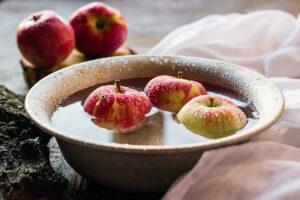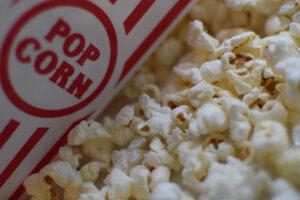The bowl of water diet is a concept of choosing the right foods to eat throughout the day and evening to minimize calorie storage. Imagine a bowl of water sitting next to you as you prepare your meal or snack. Now ask yourself, “if I were to put this meal or snack into that bowl of water and let it sit for 5 minutes, would I still eat it”?
 Reviewing what we know about the types of nutrients we consume, being composed of carbohydrates, fats, and proteins, let us review the chemical structures again. Carbohydrates are simple chemical bonds that are easily broken by hydrolysis (adding water) and require very little energy to breakdown. Fats are complex chemical bonds and are hydrophobic (repel water) and require much more energy to breakdown. Proteins are structured chemical bonds that do not dissolve in water and require a great deal of energy to breakdown.
Reviewing what we know about the types of nutrients we consume, being composed of carbohydrates, fats, and proteins, let us review the chemical structures again. Carbohydrates are simple chemical bonds that are easily broken by hydrolysis (adding water) and require very little energy to breakdown. Fats are complex chemical bonds and are hydrophobic (repel water) and require much more energy to breakdown. Proteins are structured chemical bonds that do not dissolve in water and require a great deal of energy to breakdown.
Carbohydrates, mainly the simple or processed carbohydrates will dissolve in water. Drop a piece of bread in the water and watch the process of hydrolysis take place. Being that these simple carbohydrates require very little or nearly no energy at all to breakdown, it is clear, all the calories stored in them are available immediately for metabolism. You spend zero energy in breaking down the substance and gain nearly 100% of the available energy to be used or stored.
Fats, oils, and waxes tend to float and not mix because they “repel” the water. Water does not break down lipids and the body must use enzymes (protein-based emulsifiers) and salts to break the bonds of lipids in order to be absorbed. Even in the blood stream, lipids, in form of fatty acids and lipoproteins, do not mix with the blood and tends to float to the surface if the blood is not in motion. The fatty acids and lipoproteins form the cholesterol in the blood which is directly attributed to cardiovascular health.
Proteins are the structural components of nearly every aspect of life. The blood (hemoglobin), the vessels (elastin), the heart (myoglobin), all are composed of protein and are difficult to “break down”. Proteins require mechanical and chemical breakdown to release the amino acids that are necessary for cellular growth, reproduction, and repair. Proteins do not breakdown by hydrolysis and often require mechanical, chemical, and thermal energy to denature (weaken) the chemical bonds enough to break them.
Choosing the food based on calorie count is not necessarily the wisest decision when it come to dieting. Just because the label says “diet” or “low calorie” does not mean that it is a good dietary choice. For example, let’s choose some simple food choices and apply the “bowl of water” diet plan to them.
- Popcorn – (popped) vs. almonds
- Protein bar vs. apple slices
- Subway sandwich (any) – vs hard-boiled egg
 *** Would you still eat these after they sat in the water for 5 minutes? If so, the item you chose most likely has fewer “simple” carbohydrates and will require more energy to break down. ***
*** Would you still eat these after they sat in the water for 5 minutes? If so, the item you chose most likely has fewer “simple” carbohydrates and will require more energy to break down. ***
The magic bowl of water becomes a visual for the processes mention above. Dropping the food source into that water will expose the general components of that food. Carbohydrates will easily dissolve in water, fats will float and not mix in water, and proteins will remain intact in water.
Choosing what to eat and when to eat it is simple if the bowl of water can be applied. Foods that easily dissolve in the water should be consumed early in the day to assure that they get burned and not stored. As a general rule, anything that dissolves in the water should be consumed before 10am. All foods that do not dissolve in the water can be consumed in controlled portions throughout the day.

